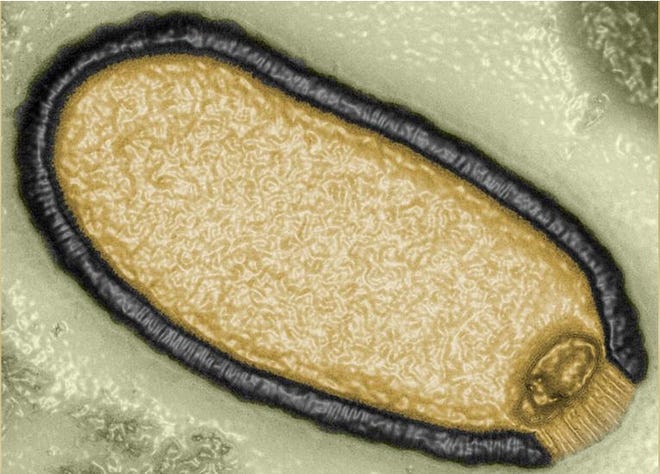‘Zombie virus’ frozen in permafrost revived after 50,000 years
Scientists have revived a “zombie” virus they are saying spent practically 50,000 years frozen in permafrost, a part of a brand new batch of analysis that identifies a number of newly found viruses which were frozen underground for tens of 1000’s of years.
To higher perceive the dangers posed by frozen viruses, Jean-Michel Claverie, a French professor of medication and genomics, examined earth samples taken from Siberian permafrost – additionally known as completely frozen floor – looking for what he describes as “zombie viruses.”
Permafrost might be discovered on land and beneath the ocean flooring in areas the place temperatures not often rise above freezing. It is typically discovered within the Arctic, Greenland, Alaska, Russia, China and Japanese Europe.
The Arctic’s permafrost, a frozen layer of soil, is melting due to rising temperatures, scientists say, doubtlessly awakening viruses which were dormant for millennia.
Analysis printed by Claverie, emeritus professor on the Aix-Marseille College College of Drugs in Marseille, and his staff in February present historical viruses from Siberian permafrost samples had been collected within the research.
They discovered the oldest of the virus strains – collected from an earth pattern on the backside of an underground lake – was virtually 48,500 years outdated.
Samples taken from the abdomen of woolly mammoth stays had been 27,000 years outdated.
‘Zombie ant fungus’ in people? Local weather change sparks fungi fears — some severe and a few sill

A reanimated virus
In 2014, Claverie and his staff reanimated a virus from permafrost that had been dormant for 30,000 years by introducing it into cultured cells. He studied a virus that focused solely single-cell amoebas as a security measure.
The subsequent 12 months, in 2015, repeated the experiment with a special virus kind.
In his newest analysis, printed on Feb. 18, Claverie and his staff remoted a number of strains of historical viruses from seven places in Siberian permafrost.
In accordance with the research, the most recent strains belonged to 5 virus households – pandoravirus, cedratvirus, megavirus and pacmanvirus, and the brand new pithovirus pressure – along with the 2 he had revived earlier.
Collagen is is the most recent wellness craze:Are your nutritional vitamins inflicting local weather change?
May unfrozen historical viruses threaten public well being?
In accordance with Claverie, viruses that stay infectious after being frozen for thus lengthy might pose a public well being risk because the viruses that infect amoebas are stand-ins for all different viruses that could possibly be within the permafrost.
“One can moderately infer that many different eukaryotic viruses … can also stay infectious in related circumstances,” the research reads.
“We see the traces of many, many, many different viruses,” he informed CNN. “So we all know they’re there. We don’t know for certain that they’re nonetheless alive. However our reasoning is that if the amoeba viruses are nonetheless alive, there isn’t any cause why the opposite viruses won’t be nonetheless alive and able to infecting their very own hosts.”
Go deeper
Natalie Neysa Alund covers trending information for USA TODAY. Attain her at nalund@usatoday.com and comply with her on Twitter @nataliealund.
